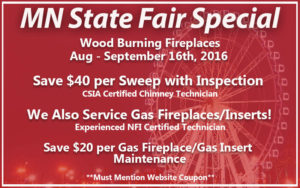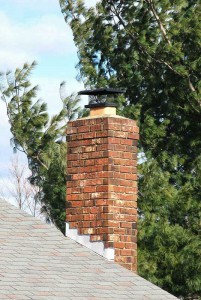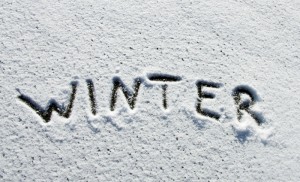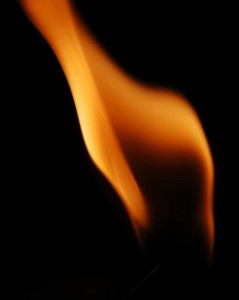 The Minnesota State Fair may be over, but there is still time to take advantage of our special pricing! For a limited time, we are offering a State Fair Special on both chimney sweepings with inspections and gas fireplace and insert maintenance. Take advantage of this special pricing until it ends on September 16!
The Minnesota State Fair may be over, but there is still time to take advantage of our special pricing! For a limited time, we are offering a State Fair Special on both chimney sweepings with inspections and gas fireplace and insert maintenance. Take advantage of this special pricing until it ends on September 16!
Minnesota State Fair Special Details
We are currently offering special State Fair pricing to our customers on select services. Now through September 16, save $40 per sweep with inspection; all chimney sweepings and inspections are carried out by a CSIA certified chimney sweep.
In addition to services for your wood burning fireplace, we also have special pricing on gas fireplace and insert services. Customers can save $20 off their gas fireplace and insert maintenance services. In order to take advantage of these special fall savings, customers must mention the website coupon.
Chimney sweepings and inspections
While we offer a wide range of chimney services, one of the best things you can do for your fireplace system is to have it swept and inspected every year. Regular yearly chimney sweepings can keep your fireplace burning safely and efficiently; by removing flammable creosote buildup from the flue we can significantly reduce the risk of accidental chimney fire.
In addition to having your chimney swept, an inspection can help identify any areas of damage or deterioration. “A chimney inspection is like an annual dental check-up,” says Ashley Eldridge, Director of Education for the CSIA. “It’s preventative maintenance that helps minimize potential hazards.”
At Jack Pixley Sweeps, we are one of the few companies in the area that provides closed circuit camera inspections. This level of inspection helps uncover any hidden damage within the chimney and can be an important diagnostic tool when uncovering the cause of long term chimney issues such as leaks or drafting problems.
Gas fireplace and insert maintenance
Gas fireplaces and inserts need maintenance, too! While these heating appliances may not require you to shovel ashes after every use, they still need to be regularly cleaned and inspected. Professional care is especially needed for gas fireplaces; due to the delicate and exact connections needed by the gas lines, accidentally shifting a burning as little as half an inch can cause major performance problems.
Fireplace inserts also need regular upkeep and maintenance. The kind of fuel source your insert uses will impact the kind of preventative care it needs. While the flue of gas inserts need to be inspected for signs of acidic condensation, wood burning inserts need to be checked for the same creosote buildup as traditional masonry fireplaces.
Don’t put off your chimney maintenance; schedule before September 16th and take advantage about our state fair pricing! For more information on our State Fair Special, contact Jack Pixley Sweeps today – and don’t forget to mention our online coupon! We are proud to serve our friends and neighbors in the Twin Cities and are dedicated to being “the name you can trust!”
Fireplaces continue to be beautiful additions to many homes. Additionally, many homeowners find that they rely on them in winter to add warmth and comfort to their homes.
Despite their popularity and widespread use, most people do not understand how their chimneys work. This can sometimes lead to homeowners misidentifying the cause of an issue or not realizing it is time for maintenance.
The following are some of the most important components of your chimney that many people are unfamiliar with. Learning more about the anatomy of your chimney can help you identify and understand any chimney issues you may have in the future.

Chimney cap
The chimney cap covers the top entrance of your flue, allowing smoke to safely exit while preventing water, animals, and debris from getting in. Uncapped chimneys or those with damaged caps are more likely to have issues with water damage, blockages, or animals nesting in the chimney.
Chimney crown
A chimney crown is a slab, typically made of concrete, which protects the masonry of your chimney. Damaged chimney crowns may allow water into the chimney structure or allow the masonry of the chimney to receive water damage.
Chimney chase cover
Similar to a chimney crown, a chimney chase cover protects the top of the chimney. Typically made of metal, chase covers were used regularly in the 1970s and 1980s with factory built or prefabricated chimneys. Over time, chimney chase covers may deteriorate, causing rust stains on the masonry of the chimney.
Chimney damper
The chimney damper separates the firebox from the flue. Open and closed using a pulley or a lever, the damper prevents heated or air conditioned air from escaping as well as minimizing drafts. Likewise, dampers help prevent moisture, debris, or animals from getting into the firebox. While dampers should be closed when the fireplace is not in use, the damper should always be opened before starting a fire to prevent smoke from backing up into a room.
Chimney flue
The chimney flue is the chamber through which smoke, gas, and other byproducts of combustion are vented to the outside.
Chimney flue lining
Chimney flue liners protect the surrounding building materials from the hot air, smoke, gas, and other byproducts of combustion that are travelling up the flue. There are three main types of flue linings: clay tiles, metal, or cast in place. Over time, creosote can build up on the flue lining. This byproduct of combustion is highly flammable, and it’s removal is the primary purpose of annual chimney sweepings.
Smoke chamber
The smoke chamber is designed to help compress smoke from the firebox into the flue without creating a backdraft. Smoke chambers are created with a sloping wall just above the firebox. A well designed smoke chamber with allow smoke, gas, and other byproducts of combustion to smoothly and quickly travel up the flue.
Smoke shelf
Located behind the damper, the smoke shelf is designed to catch any water or debris that enters the chimney. The smoke shelf also helps compress the large amounts of smoke created in the firebox to the much smaller entrance to the flue.
Chimneys are complex structures with a number of working parts that must be kept up in order to keep your fireplace working well. Contact the experts at Jack Pixley Sweeps today to schedule a sweeping and inspection to ensure your fireplace and chimney are in prime condition.
As the temperatures drop outside, people come indoors to work, play, and spend time with friends and family. Oftentimes during the winter, this time is spent in front of a fireplace enjoying its warmth and ambiance. Unfortunately, what some homeowners fail to realize is that winter weather can have a negative impact on your chimney over time.

While winter means the coming of the festive holiday season, it also brings frigid temperatures, freezing rain, ice, and snow. Because the winter is typically the heaviest use season for fireplaces, it is important to have an annual sweep and inspection done as early as possible to ensure that your heating appliance is working efficiently, has not been damaged, and is safe to use all winter long.
How water damages chimneys
One of the most common – and most preventable – ways that chimneys are damaged is through long term exposure to moisture. Water can wreak havoc on a chimney and fireplace system, affecting everything from the bricks and mortar to the flue and damper.
While chimneys may appear to be simple structures, they are actually surprisingly complex. Because of this, finding the exact cause of water entry may be difficult. Here are two common ways that water enters a chimney.
Chimney cap: A chimney cap, sometimes known as a rain guard, covers the top portion of the chimney. This allows smoke out while keeping sparks and embers in. If damaged, water, debris, and even animals can get into the chimney.
Masonry damage: The bricks and mortar of a chimney are constantly exposed to the elements. Because of this, absorbed water constantly freezes and thaws, creating cracks that allow more water to enter. Over time, the freeze-thaw process can cause major damage to the chimney as bricks crack and crumble.
Preventing water damage
Although it is inevitable that chimneys are exposed to water from rain, ice, and snow, there are steps that homeowners can take to prevent and minimize water damage. Preventative maintenance is the most effective way of preventing water damage. During an annual sweep and inspection, a trained technician will inspect the chimney for any signs of damage to the masonry, chimney cap, or other parts of the chimney. When spotted early, many minor problems can be fixed before they turn into major concerns, saving both time and money.
In addition, the trained technicians at Jack Pixley Sweeps can apply a variety of protective sealants to existing masonry structures to prevent water from seeping in. These professional grade products can provide as much as ten times the water prevention of standard brands. These sealants can greatly extend the life of your chimney and prevent any existing damage from getting worse.
Animal entry
Just as people tend to stay inside more during the winter, birds and other small mammals seek shelter as the temperatures turn cold. Because of this, uncapped chimneys or those with un-repaired openings often become hiding places for wildlife. In order to continue safely using your fireplace, it is important to have the animals safely removed as quickly as possible. Following removal, repairs can be made to make sure the animals cannot reenter the chimney structure.
If you have questions about preparing your chimney for winter, contact the experts at Jack Pixley Sweeps today!
Understanding the Anatomy of Your Chimney
Many people have fireplaces and chimneys in their homes and trust that they will always work as they are supposed to. However, there are many ways that a chimney could malfunction and it is important to understand exactly how this occurs. In order to maintain a safe chimney, homeowners should be familiar with the parts of their chimney and how they function. This will help them to quickly identify any issues that may arise and help you communicate with a certified professional.
At the very top of the chimney, there is a piece called a spark arrestor. This will keep sparks from leaving the chimney. A small spark may not seem like a big deal but, with the proper wind, a hot spark can quickly turn into a big fire. If this occurs on the roof, the fire will spread not only throughout the home, but it could also quickly jump to the neighbor’s home. Even very warm ash leaving the chimney can start a fire in this way, making the spark arrestor a vital piece of chimney safety.

It only takes a spark.
Also at the top of the chimney is a cement piece known as the chimney crown. This protects the upper layer of bricks on the chimney. More importantly, it helps keep foreign material out of the chimney. In addition to many other substances, it keeps excess moisture from entering the chimney, which can cause a great deal of structural damage. In addition to the chimney crown, many people also choose to use a separate chimney cap.
The long part of the chimney, which allows smoke out of the fireplace, is known as the flue. Inside of the flue is a long piece called the flue liner. This liner helps protect the flue from general wear and tear as well as damage from water. Liners come in a variety of materials, including clay, tile, and stainless steel. However, stainless steel is typically considered the best choice because it is the most durable and lasts the longest.
Inside of the chimney is a piece called the damper. The damper opens and closes the flue, either letting smoke out or trapping it in. It is very important to make sure that the damper is always open when burning a fire in the fireplace. Leaving it closed will quickly fill the entire home with smoke and dangerous gas.
Also inside of the chimney is a smoke shelf. This is a small piece that catches material falling through the chimney. This could be anything from ash to debris from animal nests inside of the chimney. If these materials find their way into the fireplace, they could start a dangerous blaze that quickly gets out of control. It is very important to make sure that the flue is always clear of all debris, but the smoke shelf provides extra protection in the event that anything does make its way in there.
When material burns in the fireplace, it creates combustible gas. The smoke chamber compresses the gas so that it does not create a back draft. Without it, the gas may enter the fireplace or the home, causing both health and safety risks for the entire household.
There are many different parts to a chimney and each plays and important role in the safe use of the fireplace. In order to use the chimney and fireplace without incident, homeowners should understand exactly how each piece works and what it does. This will make it possible for them to quickly identify any problems and decide what action needs to be taken before using the chimney again.
 The Minnesota State Fair may be over, but there is still time to take advantage of our special pricing! For a limited time, we are offering a State Fair Special on both chimney sweepings with inspections and gas fireplace and insert maintenance. Take advantage of this special pricing until it ends on September 16!
The Minnesota State Fair may be over, but there is still time to take advantage of our special pricing! For a limited time, we are offering a State Fair Special on both chimney sweepings with inspections and gas fireplace and insert maintenance. Take advantage of this special pricing until it ends on September 16!


